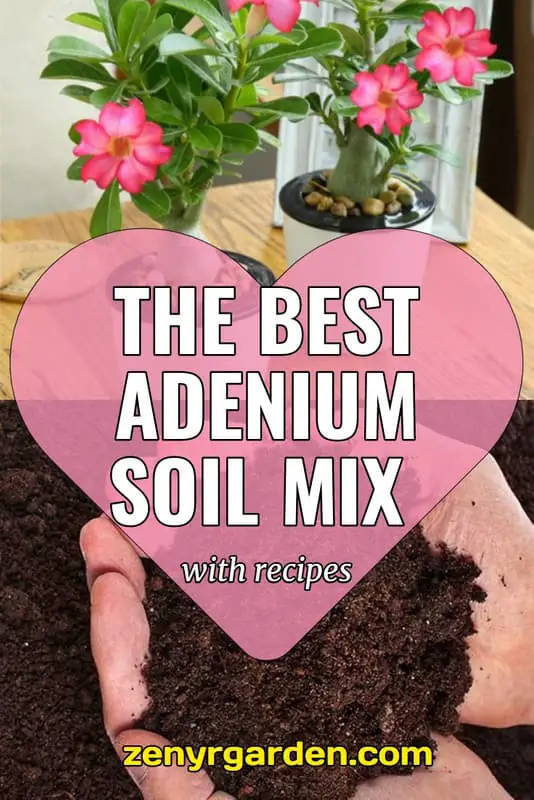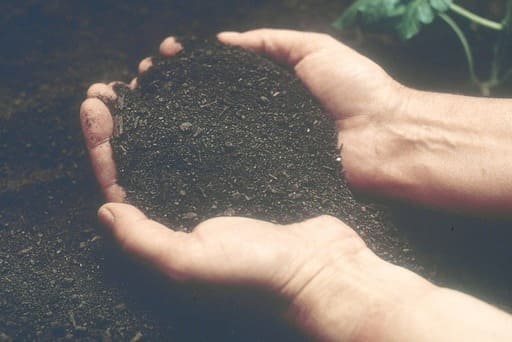=Adenium desert rose itself is not picky when it comes to soil environment. The key thing we should keep in mind is water drainage for our baby's roots.
Many folks get well-draining bonsai or cactus soil mix for the desert rose as well—which work out well for them.
Let's come with us to explore three mixes that can be best for your adenium at different stages. Maybe it can be good for you, the gardeners, as well.
And first let's quickly see:
What Is The Best Soil For Adenium?
Adenium desert roses overall prefer a free-draining growing medium that holds just enough moisture for the roots and doesn't create standing water–which could lead to root rot. Materials like sand, perlite, pumice are great as potting substrate for them.
If you want to shape the roots of your adenium, you could choose something like sand. The material gets more compact when watered. We could then get fatter roots for the adenium. If you go with something more airy like coco fiber, it's easier for the roots to poke through so they will grow slimmer, but longer.
Here is one observation on how the roots grow differently in different substrates:
/adenium-root-formation.jpg)
Adenium overall tend to like it moist but not too wet. Observe the weather conditions in your local area & water more in the summer.
With some well-draining materials like rocks or tree barks mixed in, you'll be safeguarded even when you accidentally water your babies just a bit too much. Those spacers will create exit ways for the water to drain out easily.
If you want to get some pre-mixed medium, check out these:
Best Adenium Soil Mix: Top 3
Best Overall Succulent Mix
| Best Overall Succulent Mix |
|---|
 |
| * Nutrient-enriched |
| * Light, fluffy & pH balanced |
| * Optimal drainage |
Many people use succulent/cactus soil for adenium. Hoffman cactus mix is good for cactus & also works great for succulents like adenium. In it there's sand, perlite and lime stone–which works really well for drainage.
Additionally, there's some peat moss in it that adds a bit of acidity in the soil. As an acid-loving succulent, adenium grow well in such environment.
No-soil Bonsai Mix
| No-Soil Bonsai Mix for Adenium |
|---|
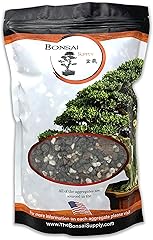 |
| * 70+ trace vitamins |
| * Slow release nutrients |
| * Balanced airflow & moisture |
For this second mix over here, the white & pink pumice in this mix has over 70 or so vitamins. There's stuff like iron, zinc, fulvic acid to build a strong adenium root system.
Even without soil, the pine bark mixed in will do a great job at absorbing nutrients & releasing them gradually over time like an organic matter normally would. Your adenium then get a nice balance of airflow & moisture.
Premium Mix
| Premium Mix for Adenium |
|---|
| * Contains coco coir, worm castings, mycorrhizae, kelp & pumice |
| * Expands to 4x the size when mixed with water |
| * Peat free, all natural, family and pet safe |
This one has all the good bits from coconut coir, worm castings to beneficial fungi. It is a bit more expensive than the other ones, but with this stuff a little goes a long way. Just add water and the soil expands 4 times its size.
One question many desert rose growers have is:
Is Epsom Salt Good For Desert Roses?
Epsom salts contain magnesium and sulfur that is good for leaf growth. Some folks use epsom salts for desert roses after pruning or add it to the soil to fertilize the plants.
The trick is to not sprinkle it on the stem and leaves, because it will cause burning. Sprinkle your salt around the soil and give it a shower of water afterwards. When you see the salt disappears on the soil surface, you're good to go.
Maria's Garden, an adenium expert, uses epsom salt here (15:37):
Maria's Garden Applying Epsom Salt After Pruning Desert RosesIf the DIY spirit in you is kicking and punching eagerly, then let's get our hands dirty with these mix recipes:
Mix #1 – Good for Seeds & Baby Adenium Desert Rose
| Ingredients | Purpose |
|---|---|
| 1 handful perlite | air flow, drainage |
| 1 handful pumice | drainage, root grabbing |
| 1 handful vermicompost | good nutrients |
| 1.5 handful Akadama | supplement nutrients, soil acidicity |
/adenium-desert-rose-soil-mix-recipe-one.jpg)
Why Perlite & Pumice?
Perlite & pumice are lightweight volcanic rocks with thousands of tiny holes on their surface. This makes them great for air flow, water retention & drainage. They also contain lots of other minerals like iron, calcium, etc.
Thanks to this porous texture, your baby desert roses will have a lower chance of root rot–as the water drains out well. They also add some yummy minerals to the soil. These rocks can be quite dusty so you might want to rinse them first before mixing to increase the germination rates.
Vermicompost
In a way, you can think of cow manure or vermicompost as the “protein” in your mix. It gives your baby desert rose the energy to start up new root and begin growing.
Cow manure and vermicompost have nutrients like N, P, K that are essential to the plant’s growth and health. But it's not limited to vermicompost. Other compost also works fine.
Here are more benefits of vermicompost if you're interested:
>> Link Blog post: Benefits of Vermicompost
Moving on:
Akadama & Peat moss
Akadama soil, a light porous volcanic soil, doesn’t provide a lot of nutrients for the plants in and of itself. However, it is used as a well-draining substrate to provide a firm place for tiny roots to grab on and grow.
You can also replace Akadama with peat moss or sphagnum. Peat moss has an acidic pH level from 3.6 - 6, which is suitable for acid-loving succulent plants like adenium. Add it moderately as peat can retain quite a bit of moisture.
The drawback of sphagnum is that it is quite compact, which can make it hard for water or air to flow through easily. This is why we add some perlite and pumice to open up the space, giving our baby enough room to breathe and thrive.
Summary of Mix #1:
As you can see, with this Mix #1 right here, we have created an environment that is well-nourished, well-drained, and well-ventilated for our seeds to wake up and say, “Hello world!”.
If this soil mix sounds like too much work for you, then how would you like a mix with only two main ingredients?
Baby adenium will be happy living in this soil mix and so will the lazy (or efficient) side of some of us gardeners.
Here is:
Mix #2 – Two-Component Mix
| Ingredients | Purpose |
|---|---|
| 40-50% garden soil | Essential nutrients |
| 50-60% bio-char | Anti-microbial properties, drainage |
/adenium-desert-rose-mix-recipe-two.jpg)
For this mix, you can simply use garden soil to feed the baby plants with all the good bits. Bonsai soil or cactus/succulent soil is great as well.
This type of soil is fine because adenium is a succulent plant. We just need to make sure the soil provides good nutrients to promote root formation and growth.
A component in this mix is bio-char...but many people wonder:
What is Bio-Char / Horticultural Charcoal?
Bio-Char (with Char short for charcoal) is a charcoal-like substance that is produced from burning organic waste (dead plants, leaf litter) or biomass with very little oxygen. Unlike the burning of other common charcoal, in a controlled process called pyrolysis, biochar is produced with little to no contaminating fumes.
The carbon, which made up of almost 70% of the final product, is thus captured in a safe, clean form that can be later used to improve soil quality.
The texture of biochar is highly porous (with a large surface area) and lightweight. It is applied to enhance soil structure, promote microbial activity, and even prevents nutrient loss in the soil. Good bio-char has a brittle, glass-like sound when it's dropped and in some cases is edible.
With all of its great benefits, for good soil, you could use some bio-char or horticultural charcoal. It helps purify the soil from some microbes/mold or other kinds of bad bacteria.
| Germ-killer Bio-Char |
|---|
 |
| * Anti-microbial properties |
| * Aeration & drainage |
| * Extra potassium |
The little pieces space out the medium for maximum air & drainage. This stuff also provides potassium to strengthen the adenium's natural defense against diseases.
Please note: From some growers' experience, charcoal may create quite a warmer environment for adenium in pots (due to the carbon content). This means the plants may need some more water & air flow.
If you get used coal from some places, make sure it's clean. So fungi eating adenium won't happen to your plants (like this one):
/fungi-on-adenium-seed.jpg)
Also take note of:
Aeration & Drainage
If you use this mix and live in a hot climate, remember to spread leaf mulch around your plants for cooling on hot summer days. Alternatively, you could use some old newspapers, an old shirt for covering. You could also use terracotta pots to allow good air flow in & out.
For drainage & moisture retention, gardeners also use peanut shells or rice husks. These stuff have thousands of pores on the surface area & are less dusty than the rocks. Over time, these decay into the soil and become organic fertilizer for it.
When the baby plants grow a bit bigger, mix in some fertilizer to give it more energy to grow.
Speaking of growing up, and after checking out this two-compo recipe, have you checked out a mixture that could be good for adult adenium?
Mix #3 – Good for Adult Adenium
| Ingredients | Purpose |
|---|---|
| 1 part garden soil | Vital nutrients |
| 1 part river sand | Moisture retention, air flow |
| 1 part sand gravel | Aeration, drainage, oxygen |
| 1 part brick surki | Retain moisture |
| 1 teaspoon leaf mold | Diverse micro-organisms addition |
/adenium-soil-mix-recipe-three.jpg)
This third mix is great when you are re-potting your growing baby plants. It is recommended by Dr. Surja Agarwal, one of the most passionate gardeners out there with practical experience.
If at the young stage we focus on providing a medium that allows new root formation, here you can see we balance out the nutrients, water and air flow in our soil mix.
You may be wondering:
What is Surki?
Surki is the powder made from red bricks that people use to build houses. This cheap material is great for moisture retention.
If surki is not available in your local area, that is not a problem, you can find other great alternatives that serve the same function like perlite, pumice, peanut shells or rice husks.
Vermiculite may also work, but be careful because this material tends to hold more moisture than perlite.
With the sand & gravel in this mix:
Sand & Gravel
With sand and sand gravel, we are trying to toughen our desert rose up by creating a desert-like environment.
Sand gravel is slightly bigger than our perlite and pumice. Still, it allows good aeration and drainage for the lower part of the plant.
From our own experiment, we have found that sand produces incredibly good results for starting seeds. If you want to have a look, here are the results:
Sand can also help adenium that have been fed with too much chemical fertilizer.
| Mold-free desert sand |
|---|
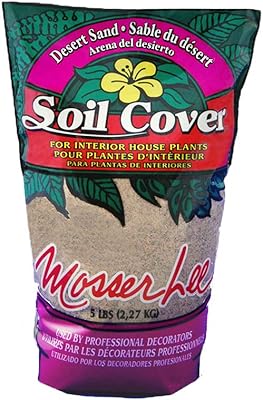 |
| * Clean sand |
| * Drains well |
| * Black, white or cream colors |
Finally, why are there leaf mold in the mix?
Leaf Mold
We add a teaspoon of leaf mold or compost to introduce more varieties of micro-organisms into our soil.
Some people say a teaspoon is too little, but it actually contains a good amount of micro-organisms for our desert rose to adapt to already.
We want to train the plant so it can grow stronger, but we don’t want to create too much of a shock during an environment change. This, in a way, is like a training for the adenium’s metabolism system.
Because now our plant is a little bit bigger, we can let it meet new “faces” and begin creating relationships with good ones and strengthening its resistance against the potentially harmful ones. Thus, we can grow it up tough inside and elegantly beautiful outside. Every gardener’s dream!
As we've seen leaf mold, have you ever heard about:
Root Fungi... or Mycorrhizal Fungi?
Mycorrhizal fungi (or more commonly known as root fungi) are the good guys living around the root system. Almost 90% of vascular plants on planet Earth form symbiotic relationship with these fungi.
The plants feed them the sugar they make from photosynthesis, and in return, the fungi feed the plants hard-to-find nutrients like phosphorous in easy-to-digest little bits. And the fungi also protect the roots from diseases. A win win for everybody.
Adding a scoop of this can significantly increase the varieties of effective micro-organisms for explosive root growth & biomass increase.
| Ready-to-use root fungi |
|---|
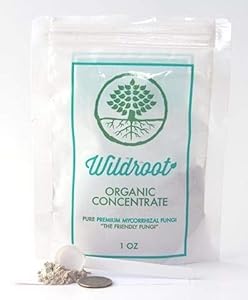 |
| * 10+ species of beneficial fungi |
| * Water soluble for efficient use |
| * Fight the bad guys |
Just a note: If your land has chlorinated underground water like in some cities, you may not want to use these mycorrhizal fungi. Because the chlorine in the water may kill or reduce the activity of the fungi.
So it may not be bringing you a lot of good. If you have access to it, lake water, well water or rain water would be fine. Just make sure not to use chlorinated water. Or else these microbes might get killed off.
If you're curious about it, to de-chlorinate tap water at home, you could try bubbling it for about 30 minutes with an aquarium pump. Letting the water sit exposed outside could also help the chlorine off-gas. Squeezing some lemon juice or vitamin C tablets into the water could also work well as the vitamin C can help de-chlorinate the water almost immediately.
And with all that you now know, we can begin:
Mixing Your Own Soil!
Through our exploration of different mix recipes, which was lots of fun, we must share with you these few last notes:
Each grower must experiment to find the potting medium that works well for him or her. Sorry, there is no better answer! It's a good practice to obtain several plants of the same kind and pot them in different mixes to determine the best one for your cultural conditions. –Mark A. Dimmitt
With that, when you're ready to mix the food, remember there are no strict rules or strict recipes to follow. Because there are alternatives that could serve the same function (like for drainage, nutrient loss prevention, aeration, moisture, etc.).
So you can do what seems right for your plants at this moment of their development. And find ingredients that are close to you or easily obtained locally. It's probably the best for the plants and the gardeners (pockets).
With these guidelines, we now understand the different components & what they do for your desert roses and how they interact with each other.
| Ingredient | Example, Purpose |
|---|---|
| Inorganic | rocks, drainage/extra minerals |
| Organic | manure, nutrients |
Inorganic elements are stuff like volcanic rocks, sand, surki. Organic stuff are things like cow manure, vermicompost or other fertilizer.
A note for some of our beginner gardeners:
Organic vs Chemical Fertilizer
Chemical fertilizers are those that react immediately when released into the soil, which could burn the roots due to its heating property. Organic fertilizers are those that release slowly–just like how an organic material decomposes over time. This is closer to the natural way of soil enrichment & is a better way to feed your plants. When chemical fertilizer is mixed with water, it attracts no mosquitoes. When organic fertilizer is diluted with water, mosquitoes will come and lay their eggs there. Because it's organic! So be sure to put a lid on if you're diluting organic fertilizer and don't want to see a bunch of mosquito larvae in your mix the day after. This is one way to tell shared by Hong Quan.
Speaking of fertilizer, have you checked out the best fertilizers for desert roses:
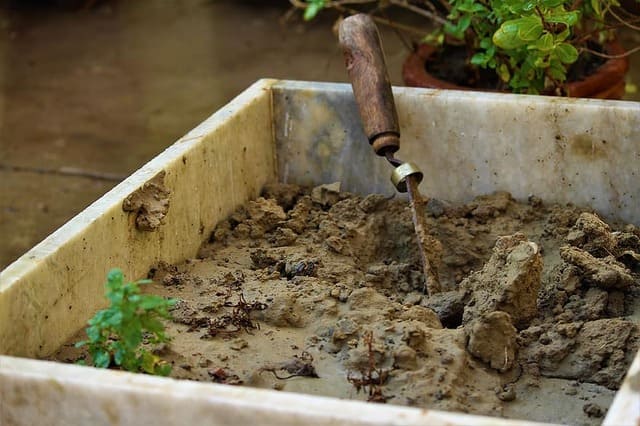
Creatively mix your own plant food for desert roses:
| Ingredient | Purpose |
|---|---|
| Perlite, pumice, sand | drainage, water retention |
| Horticultural charcoal | potassium, germ killer, aeration |
| Composted manure | N, P, K nutrients + trace elements |
Trace elements are those little nutrients like iron, zinc, copper. Although tiny, they contribute to the overall strength & health of the trees.
Also we have something to note about:
Coco Coir
It seems that many growers have had great success with using coco coir as a substrate. Our experience with coco coir has not been very good after several trials though.
The babies didn't seem to like it very much. We guess it may depend on the weather or what you're mixing in with it. But you could try it if you like. We'd love to hear how it turns out for you.
/desert-rose-in-coco-peat-and-sand.jpg)
Ingredient in Search & Experimenting:
- Chamchuri leaves: some Thai adenium growers use this stuff
- Masanobu agar mix (to feed beneficial microbes)
Credits:
Share or pin this post!
